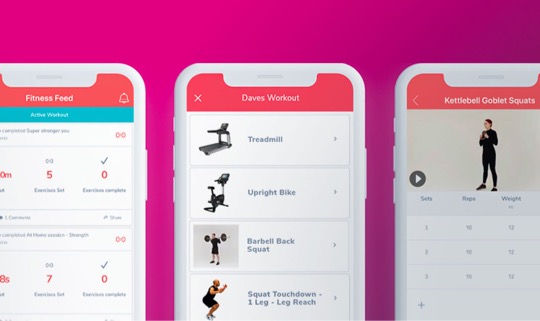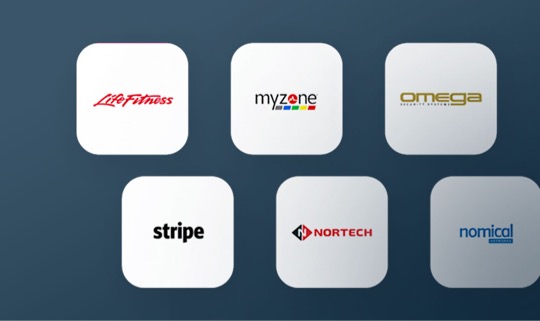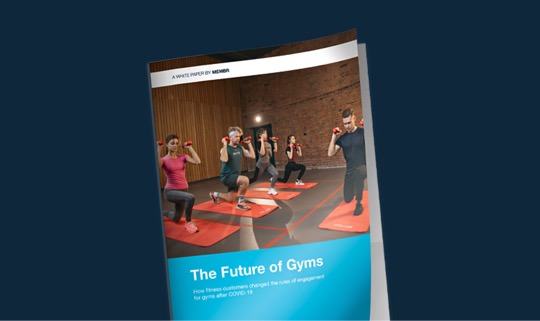Most marketers will tell you that referrals are the best source of new business, with most B2C sales models showing that they have the highest conversion rate with the lowest cost per sale.
So you’d think doing sales is relatively simple — build a good product and your members will tell everyone about it!
Unfortunately, it is rarely that simple.
We set up fantastic gyms at a competitive price (far better than our competition!), so why wouldn’t our members shout about it?
In this blog we will look at a few small things we can do to turn a happy membership base into a marketing machine.
First of all, let’s look at a great example of how well this can work with the taxi company we all love…Uber.
. . .
Uber was launched in 2009 out of San Francisco and now sits as the world’s largest taxi company estimated to reach top $10billion dollars income by the end of 2015; so how did it grow so fast?
There are lots of reasons that Uber was able to expand into 50 countries within 5 years of launching ($2.8 billion total funding would definitely help!), but there are two key factors that seem to stick out which we can replicate within the fitness industry.
Reason 1: A great product
The Uber app really does take the hassle out of ordering a taxi and traveling around the world’s largest cities: never have a need for cash, feel safe knowing who the driver is and know where your taxi is without the painful call centre phone calls.
The taxi industry was an industry ready for disruption and Uber did exactly that.
Having said that, there have been loads of great technology products that have failed, so what made Uber different?
Reason 2: A great referral scheme
If Travis Kalanick had launched a great product in 2009 and sat back, do you think he would now have a multi-billion dollar business? No need to answer that question.
For those of you who do not know, in its early days the Uber referral system for ‘riders’ allowed you to share your code with friends and get a free taxi (up to £10) each time your code was used. In addition, your friend then got a free £10 taxi, too. So simple, yet so effective. A win-win situation!
Uber took the hit on this initial ride as they still paid the driver their 80% share of both ‘rides’ (£16), but with such a good product Uber knew that the £16 cost per acquisition is good value as the lifetime spend of these costumers would far exceed this.
The Uber referral scheme worked so well for two main reasons. It gave the user an instant reward for downloading the app and using the product. They didn’t have to wait until they spend £100 to get £10 back – they were instantly given a free ride as positive reinforcement for the right behaviour!
Secondly both ‘riders’ were incentivised, which encouraged both existing and brand new riders to refer more friends. This is ultimately what made the referral system go viral!
. . .
So as a gym owner what can you learn from Uber and apply it into your gym membership sales?
Have a look at these simple steps.
Step 1: Is your product great?
If yes then continue to ‘Step 2’, if not then get back on the gym floor and workout how you can make it great before asking yourself question 1 again.
Step 2: Pick your rewards
Giving away water bottles or towels to members as a referral reward is no longer an enticing offer, as most members will already have these kinds of products.
A ‘free’ personal training session is something often given as a referral reward, however the perceived value of these sessions to the members also have to be questioned. Trainers often give ‘taster’ sessions away to help them generate leads for their PT business, so it is unlikely to motivate the member to find you new members if this is the reward.
Something that always provides the required motivation to refer (and more importantly re-refer!) is financial reward, either in direct cash or money off the membership. Before dismissing the idea of giving away your hard-earned revenue, ask yourself these questions:
- What is your average length of stay and therefore revenue per member?
- What would it cost you to give a free month away in order to get a new member?
- Based on your answers to question 1 and 2, what price are you prepared to pay for a new member?
Once you know the answer to the above question you can work out what you are prepared to give. Remember that these rewards need to be for both members, and like with Uber, at Membr we have found that simplicity works best. Members want to get money off memberships and as quickly as possible.
Step 3: Market your plan
So once you have decided on your rewards and have set up your discounted online joining packages, the next step is to market your referral scheme.
3.1 Offline marketing
In-club, offline marketing is always something that has worked well. Put up some punchy posters and banners in key areas where members congregate, such as outside the studio or in the café area. The only issue with this is that you have no control over when members see these forms of marketing and you will probably find that the same members will see these over and over again.
3.2 Email marketing
Probably the most effective way of marketing your scheme will be via email marketing.
The first thing to think about when getting people to share the referral link with their friends and family is the timing of the emails. Getting people to buy-in to the scheme early on in their membership is always advantageous. These new members have made a conscious decision to commit to your gym, so this time is as good as any for them to tell people about it!
The second thing to consider when emailing your members is choosing which ones to email. It is an obvious train of thought that members who regularly use your gym are far more likely to refer their friends. Make sure you are using software that can identify your ‘low risk’ members and contact these en masse first and far more often.
3.3 Social media
Adults in the UK have on average 182 Facebook ‘friends’ alone, so think what difference this could make to your prospect list if all your friends shared your referral scheme on their Facebook wall? You could also get an email or text to your members on day 2 or 3 of their membership to make sure you capitalise on the peak of your members’ motivation.
Step 4: Track and administrate
It is pretty clear to see that member referrals are historically a good way to generate new leads for your business. One thing that is not so easy, however, is the tracking of these referrals. This has now been made even harder with the introduction of online joining and the reduction of traditional sales staff.
It may be easy for operators to take the approach of “why is tracking these referrals so important? I have already got the lead…”. In some respects this is true, the member has joined so why would you spend time and effort tracking this back to the member that passed you the lead? The simple answer is because if you don’t then this is where it will end and the member is unlikely to refer again. If you automate the process of rewarding the member, then the member will get almost instant gratification for the referral, greatly increasing the chance of them referring again.
One Membr gym that ran an automated referral process – where they set the system up so that each time someone referred their friend they automatically got a free month – saw one member refer as many as 16 of their friends! In this example, they gave away 16 free months to this member at a cost to the club of £255.84 (16 x £15.99). This may seem like a lot to give away but this member generated 16 12-month memberships for this club, with an average length of stay of 15 months per member. This created a nice total of £3,837.60 of revenue for this gym from just one happy member!
So what is the take home point? ‘Run my gym more like a taxi firm?’… NO! If you take just one thing from this, ensure that you change your referral reward to reward both members with something that they actually need and want.













